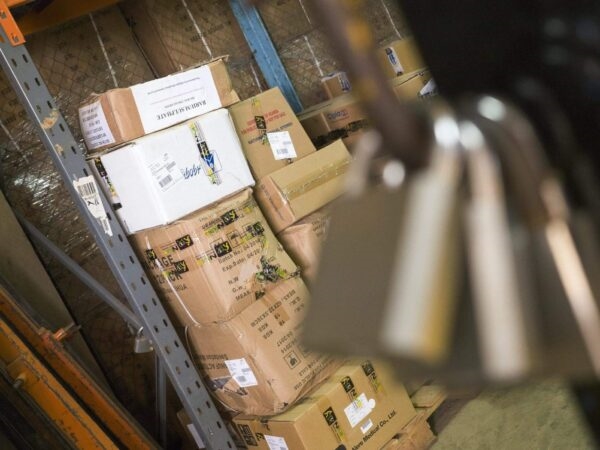In July, 2020, the Institute of Supply Management completed a survey stating that over 76% of companies have admitted to a loss in revenue since the start of the year. A drop of 23% on average means that COVID-19 has had a significantly negative impact on industries’ ROI.
Many businesses will never have experienced a situation like this before and industries will need to learn how to manage supply chain disruptions effectively in order to survive. This article will give tips towards reducing the risk and creating strategies to fight against the downfall of lost sales.
Reducing the Risk of Supply Chain Disruption
Supply chain disruptions are a negative change or effect to the process of getting a business’s inventory from one point to another using a network of people. A huge part of the reason companies across the world are having supply chain issues is because of the effect the virus had on China and specifically their working-class, where companies are likely to have most of their products manufactured. Shockingly, 31% of businesses have either had to turn down sales or delay orders in response to China’s reduction of employees and workers as a result of virus infection rates.
Overall, businesses in North America have subsequently been hit the hardest because of their business interactions with China. Any company that has mass production needs most likely has been affected by the supply chain disruptions. Ultimately, that means an endless range of businesses are being affected, and it’s been up to industry leaders to prioritize and help with the production of certain retail markets.
Specifically, the medical industry has been a priority to continue with supply chain production because of the excessive need for these products during the pandemic. Another being retail, because of the cheaper expense to create and manufacture products overseas, companies are having to either expand budgets for local manufacturing or are simply unable to keep up with any sort of prediction due to cost and lack of labor.
Amongst these crises, operational strategies for managing supply chain disruptions have been adapted and put into action. The end goal being to gain visibility and grow the industry’s online presence, most methods utilized are working towards these goals. For companies that are in need of help with no SEO or SEM experience, marketers have been able to work with brands to reach their online goals.

Tips for Reducing the Risk of Supply Chain Disruption
When it comes to reducing the risk of supply chain disruptions during COVID-19, there are several ways to help with this matter:
Perform Research – A great way to get a start on minimizing the risk of supply chain disruptions during COVID-19 would be to educate oneself on website functionality and growing your brand’s online presence. Learning about CX strategy for eCommerce can be a great way to utilize mobile usability for an overall better experience for consumers.
Use a Marketer – Linking up with a marketer or a digital marketing company might be the best strategy on how to manage supply chain disruptions. The pandemic is changing the supply chain quickly and it’s okay if your company does not know exactly how to keep up with your online presence if that was something your brand originally didn’t need to depend on.
SEO – If your brand does not want to use a digital marketing company, the option to create organic growth will help your brand with reducing the risk of supply chain disruptions during COVID-19. Using keywords and alternative words, posting relevant content as well as updating it frequently, and backing up your pages with backlinking are useful ways of gaining attention to your site.
Utilize AI Tools – For tasks that initially used people to complete, switching to AI is a safe alternative to keep products being made and businesses open. Businesses that are able to get hold of AI tools will be able to program machines to get the job done and continue on with production.
Communicate – During this time of crisis, it’s important that your brand communicates with its consumers. Customers may become angry because of items out of stock or delayed shipping expectancy, so make sure your brand communicates clearly with its audience to better help them understand the circumstances at hand and hopefully have them empathize with your current situation.
Running Tests – By running a stress test, your business will be able to see where it needs to potentially cut back on expenses or if it is worth it to have your products shipped overseas if there are supply chain disruptions. This test through its analysis predictions is a smart way to protect your business before any further disruption is created.
Keep Track of Inventory – For situations where customers have already bought a product from your brand before the product has even been made, supply chain disruptions can greatly affect consumer’s attitudes towards your brand if this situation is not handled properly. Along with your business having to admit and apologize for this mistake, in the future, your brand should be aware of what are high-selling items on their websites and have inventory back-ups, just in case.
For one’s own company, these tips can work towards long term effects and security from supply chain disruptions and any decline in ROI. Even if products are unable to be shipped or manufactured during the pandemic or any future crisis, once things start to get better your brand will have a solid base of loyal customers.
Supply Chain Disruption Case Study
With the surge of needed medical supplies because of the outbreak of COVID-19, health professionals were inevitably struggling. The need for these supplies ends up being a great example of supply chain disruption, showing what could potentially happen if companies do not stay ahead of these supply issues. Specifically, in the medical field, there should always be an overflow of inventory and efficient ways to communicate if there is ever an issue. Delays in COVID-19 tests have created fear amongst people, while health providers will be scrambling for glass vials once a vaccine is created. Unfortunately living in the mess of low COVID-19 test inventory, companies will need to work on reducing any risk of supply chain disruptions.
Conclusion
Supply chain disruption examples could be anything from a pandemic, natural disaster, transportation delays, product problems, to cyber attacks; despite the cause companies knowing how to react and keep in contact with their customers will, in turn, lead to potential success over a long term period.
Business & Finance Articles on Business 2 Community
(52)







